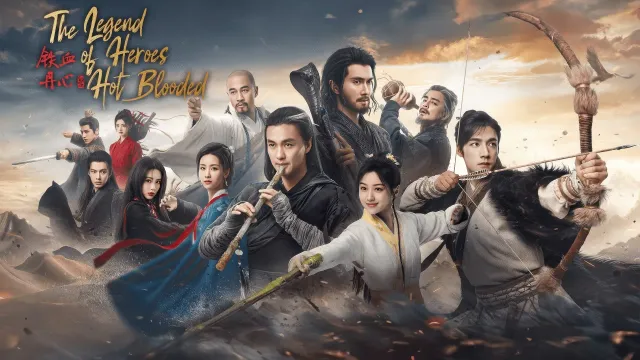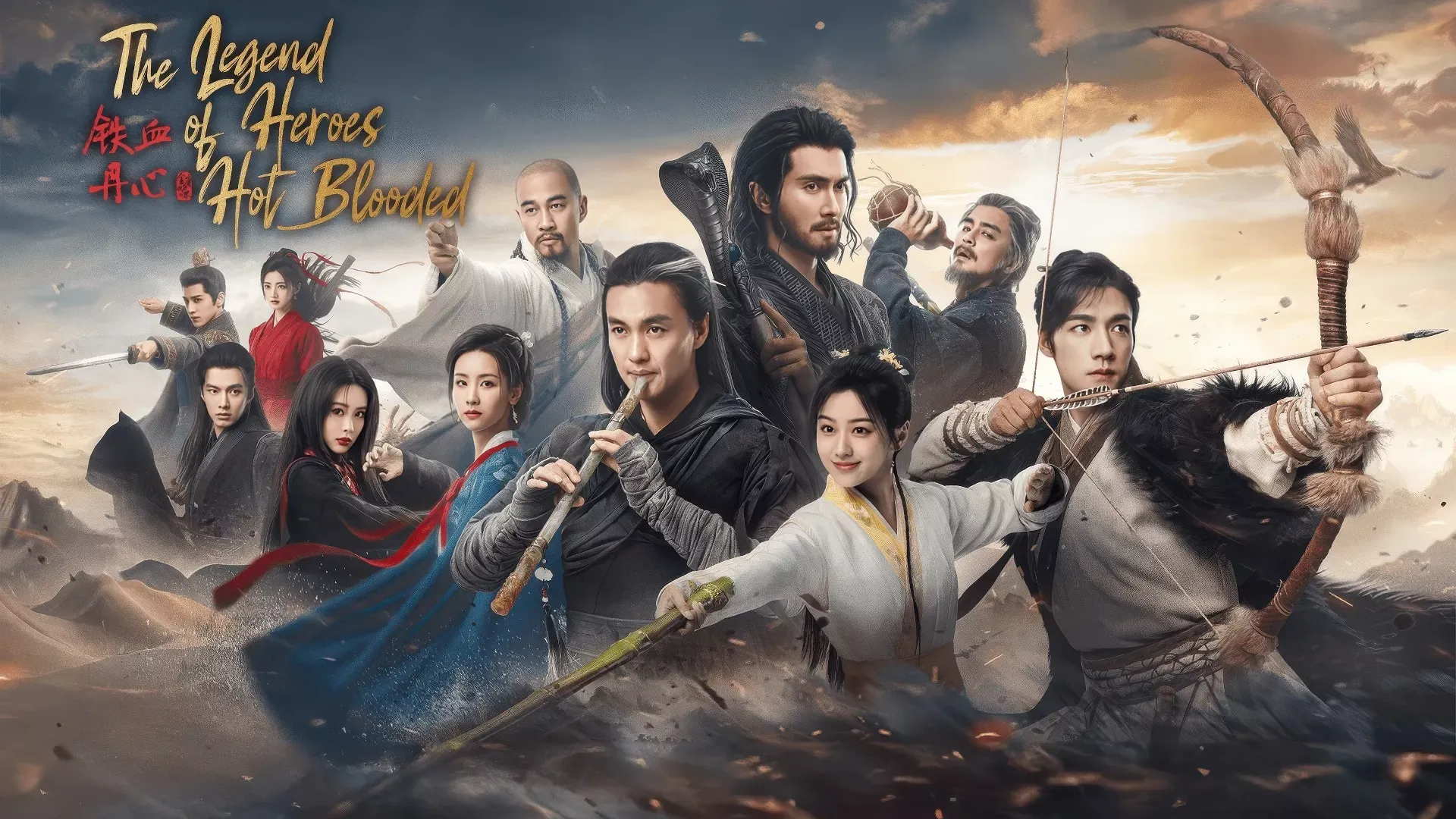Southern Song Dynasty (simplified: 南宋, traditional: 南宋, pinyin: Nán Sòng Cháo) was the Han Chinese dynasty that ruled southern China from 1127 to 1279 CE, after the Jin conquest of northern China forced the Song court to move south. During the events of The Legend of the Condor Heroes, the dynasty was under the reign of Emperor Lizong and faced constant pressure from the Jin Empire to the north and the emerging Mongol Empire.
The Southern Song Dynasty represented the continuation of Han Chinese civilization after the catastrophic loss of northern territories to the Jin Empire. The dynasty maintained sophisticated cultural traditions and bureaucratic systems while facing constant military pressure from nomadic powers. The Southern Song’s survival depended on its ability to adapt to new circumstances while preserving the cultural achievements of the Northern Song period.
The dynasty’s governance was marked by the continuation of the Confucian bureaucracy system, which emphasized merit-based appointments and civil service examinations. This system created a stable administrative structure that allowed the Southern Song to maintain control over its southern territories despite constant pressure from northern powers.
History
Foundation and early development
The Southern Song Dynasty was established when the Jin Empire conquered the Northern Song capital of Bianjing in 1127 CE, forcing the Song court to flee south. Emperor Gaozong established the new capital at Lin’an (modern-day Hangzhou) and began the process of rebuilding the dynasty’s power base in southern China.
The early Southern Song rulers focused on consolidating power in the southern region and establishing diplomatic relationships with neighboring states. The dynasty’s sophisticated civil service examination system continued to attract talented officials, creating a meritocratic government that was relatively stable and efficient.
Southern Song period
During the Southern Song Dynasty (1127-1279 CE), the empire faced significant challenges:
- Military pressure: Constant threat from the Jin Empire to the north
- Cultural flourishing: Despite military challenges, cultural achievements continued
- Economic prosperity: Development of trade networks and urban centers in the south
- Diplomatic complexity: Sophisticated relationships with multiple neighboring states
Political landscape during the novel
During the events of The Legend of the Condor Heroes, the Southern Song Dynasty was under the reign of Emperor Lizong, who faced significant challenges:
- Jin threat: Constant military pressure from the Jin Empire to the north
- Mongol emergence: Growing threat from the emerging Mongol Empire
- Internal tensions: Ethnic conflicts and martial arts world politics
- Diplomatic complexity: Managing relationships with multiple neighboring powers
Organisation
Imperial government
The Southern Song Dynasty operated under a sophisticated bureaucratic system based on Confucian principles:
Emperor and Court:
- Emperor Lizong - The reigning monarch during the novel’s events
- Imperial bureaucracy - Complex system of civil servants and officials
- Military command - Separate military hierarchy for defense
Administrative Structure:
- Civil Service: Merit-based appointments through examination system
- Military: Professional army with specialized units
- Diplomatic Corps: Officials responsible for relations with neighboring states
Martial arts integration
The Southern Song government maintained complex relationships with the martial arts world:
Official Recognition:
- Beggars’ Guild - Officially recognized martial arts organisation
- Shaolin Order - Respected Buddhist institution with imperial connections
- Various orthodox schools - Recognized martial arts organisations
Unofficial Networks:
- Secret societies and underground organisations
- Independent martial artists and wandering heroes
- Border region militias and local defense forces
Martial arts abilities
Official martial arts
The Southern Song Dynasty maintained several official martial arts organisations:
Beggars’ Guild:
- Largest martial arts organisation in the empire
- Officially recognized by the imperial government
- Served as both martial arts organisation and intelligence network
Shaolin Order:
- Respected Buddhist martial arts institution
- Maintained close ties with the imperial court
- Provided training for imperial guards and officials
Military training
The Southern Song military incorporated martial arts training into its regular programs:
Imperial Guards:
- Elite units trained in advanced martial arts
- Specialized in palace defense and VIP protection
- Recruited from both civilian martial artists and military families
Border Forces:
- Specialized units for frontier defense
- Trained in both conventional warfare and martial arts
- Maintained relationships with local martial arts schools
Philosophy
Confucian governance
The Southern Song Dynasty was deeply influenced by Confucian philosophy:
Meritocratic principles:
- Civil service examinations based on Confucian classics
- Emphasis on education and moral cultivation
- Promotion based on ability rather than birth
Cultural preservation:
- Emphasis on preserving Han Chinese cultural traditions
- Complex relationships with ethnic minorities
- Integration of diverse populations under Han cultural framework
Survival and adaptation
The Southern Song maintained a sophisticated approach to political survival:
Diplomatic flexibility:
- Sophisticated diplomatic relationships with neighboring states
- Use of trade and cultural exchange to maintain influence
- Balance between military strength and cultural development
Cultural resilience:
- Preservation of cultural traditions despite military pressure
- Adaptation to new circumstances while maintaining core values
- Emphasis on cultural superiority over military conquest
Notable members
Imperial family
- Emperor Lizong (宋理宗 – Sòng Lǐzōng) – Reigning emperor during the novel’s events
- Emperor Gaozong (宋高宗 – Sòng Gāozōng) – Founding emperor of the Southern Song Dynasty
Government officials
- Imperial officials – Various civil servants and military commanders
- Diplomatic corps – Officials responsible for relations with neighboring states
Martial arts leaders
- Hong Qigong (洪七公 – Hóng Qīgōng) – Chief of the Beggars’ Guild
- Various orthodox school leaders – Leaders of recognized martial arts organisations
Relationships
Alliances
The Southern Song Dynasty maintained complex diplomatic relationships:
Dali Kingdom:
- Generally friendly relations based on trade and cultural exchange
- Recognition of Dali’s independence in exchange for tribute
- Cooperation on border security and trade routes
Regional powers:
- Complex relationships with various neighboring states
- Trade relationships and cultural exchanges
- Diplomatic cooperation on regional issues
Rivalries
The Southern Song faced significant challenges from neighboring powers:
Jin Empire:
- Primary military and political rival
- Constant border conflicts and territorial disputes
- Complex diplomatic relationship with periods of peace and war
Mongol Empire:
- Emerging threat from the north
- Competition for control of trade routes and resources
- Intermittent conflicts and diplomatic negotiations
Political connections
The Southern Song maintained sophisticated political networks:
Martial arts world:
- Official recognition of major martial arts organisations
- Unofficial influence over martial arts world politics
- Use of martial artists for intelligence and special operations
Trade networks:
- Extensive trade relationships with neighboring states
- Control of major trade routes and economic centers
- Use of economic influence to maintain political relationships
Locations
Capital and administrative centers
- Lin’an – Imperial capital and administrative center
- Imperial Palace – Residence of the emperor and center of government
- Government offices – Various administrative buildings and ministries
Military bases
- Border fortifications – Defensive positions along northern frontiers
- Training grounds – Military training facilities throughout the empire
- Naval bases – Coastal defense and maritime trade protection
Cultural centers
- Confucian academies – Educational institutions throughout the empire
- Temples and monasteries – Religious institutions with imperial connections
- Trade centers – Major cities serving as economic and cultural hubs
Behind the scenes
Historical background
The Southern Song Dynasty (1127-1279 CE) represented a period of both challenge and achievement in Chinese history. The dynasty was characterized by:
Cultural Achievements:
- Continuation of Northern Song cultural traditions
- Advances in science, technology, and the arts
- Flourishing of literature, poetry, and historical writing
- Development of urban culture and commercial economy
Political Adaptations:
- Sophisticated civil service examination system
- Merit-based bureaucratic appointments
- Complex diplomatic relationships with neighboring powers
- Integration of diverse ethnic groups under Han cultural framework
The Southern Song context
The Southern Song period was marked by:
Military Challenges:
- Constant pressure from nomadic powers to the north
- Loss of northern territories to the Jin Empire
- Development of sophisticated defensive strategies
- Integration of martial arts into military training
Economic Prosperity:
- Development of advanced agricultural techniques
- Growth of urban centers and commercial economy
- Expansion of trade networks and maritime commerce
- Innovation in technology and manufacturing
Cultural impact and legacy
The Southern Song Dynasty left a lasting impact on Chinese civilization:
Administrative Legacy:
- Civil service examination system became the model for Chinese governance
- Bureaucratic structures influenced later dynasties
- Meritocratic principles shaped Chinese political culture
Cultural Influence:
- Neo-Confucianism became the dominant philosophical tradition
- Artistic and literary achievements influenced later periods
- Urban culture and commercial economy set patterns for future development
In Jin Yong’s works
The Southern Song Dynasty serves as a crucial historical backdrop in The Legend of the Condor Heroes, representing:
Political Complexity:
- The sophisticated diplomatic relationships between multiple powers
- The integration of martial arts world into broader political structures
- The ethnic tensions and cultural conflicts of the period
Cultural Themes:
- The contrast between Han Chinese culture and nomadic traditions
- The role of martial arts in maintaining social order
- The conflict between personal loyalty and political obligations
The Southern Song’s sophisticated bureaucracy and cultural achievements provide the foundation for the novel’s exploration of identity, loyalty, and the complex relationships between different ethnic groups and social classes.
See also
External links
- Southern Song Dynasty on Wikipedia
- Emperor Lizong on Wikipedia
- Emperor Gaozong of Song on Wikipedia
- Lin’an on Wikipedia

